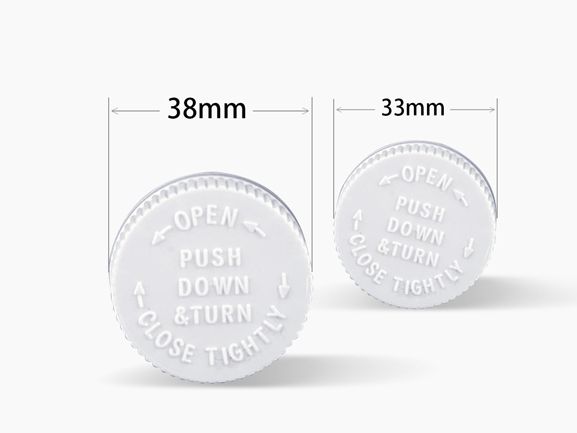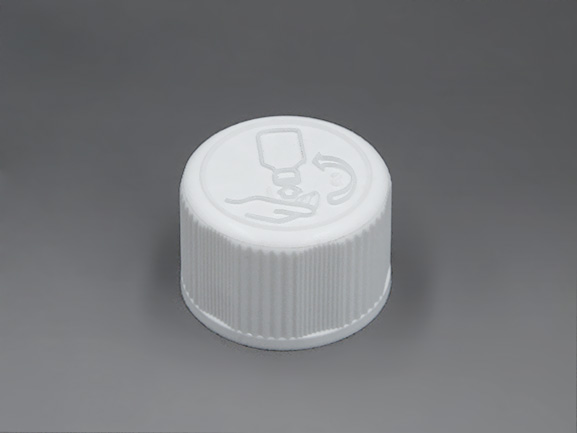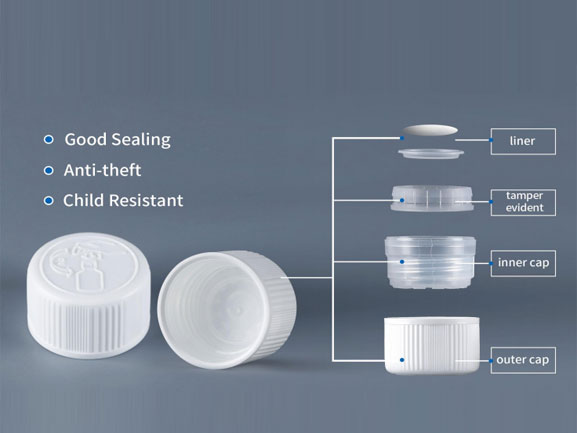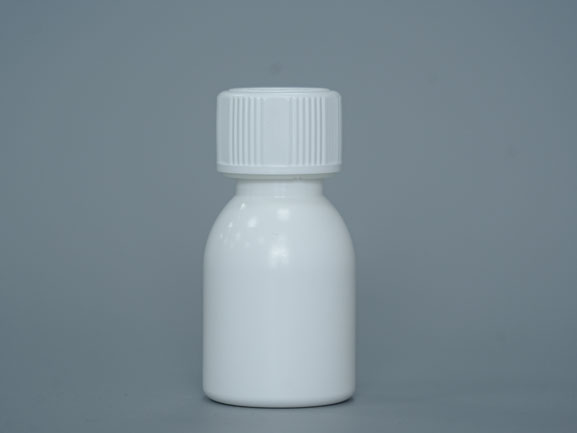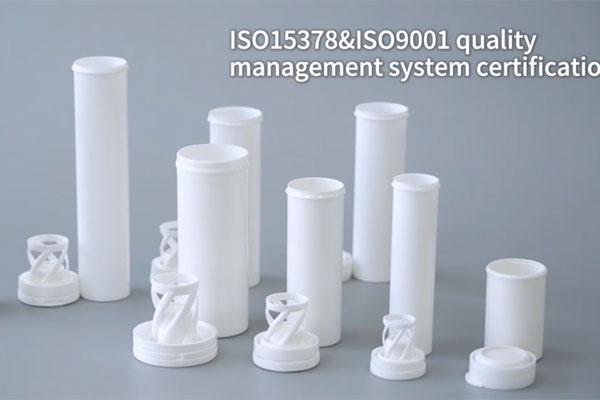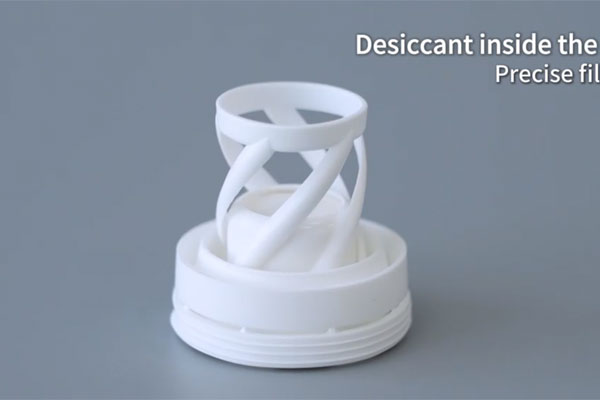ISO 8317 is an internationally recognized standard for Child-Resistant Closures (CRC), ensuring that packaging prevents children from accessing hazardous contents, such as pharmaceuticals, chemicals, and cleaning products. This standard sets requirements for packaging that balances safety and ease of use, offering secure protection against accidental poisoning while remaining accessible to adults.
Key Features of ISO 8317:
Child-Resistant Testing:
ISO 8317 outlines stringent testing methods to ensure that children under 5 years old are unable to open CRC packaging. It also ensures that the closures remain functional throughout the shelf life of the product and can be easily opened and resealed by adults.
28mm child resistant cap for liquid
Reliable Performance:
The standard tests CRC closures for durability and long-term performance. It ensures that closures withstand repeated opening, closing, and resealing without compromising on safety.
Ease of Use for Adults:
While designed to be child-resistant, the closure mechanism must also allow adults to easily open and close it without excessive force or difficulty.
Design Specifications:
The standard specifies various design features, including closure type, locking mechanisms, and compatibility with container types. This ensures consistency and effectiveness for a wide range of products.
Compliance with Global Safety Standards:
ISO 8317 helps manufacturers comply with child-safety regulations globally. It ensures that products meet the high standards necessary for consumer safety and legal compliance.
Why ISO 8317 is Important
Child Safety: The primary goal of ISO 8317 is to protect children from accessing hazardous substances that could lead to poisoning, which is especially critical for pharmaceutical, chemical, and household products.
Regulatory Compliance: Many countries and regions require CRC packaging that complies with ISO 8317, ensuring that manufacturers meet legal packaging standards.
Consumer Confidence: ISO 8317 certification provides consumers with the peace of mind that products are packaged with the highest level of child safety in mind.
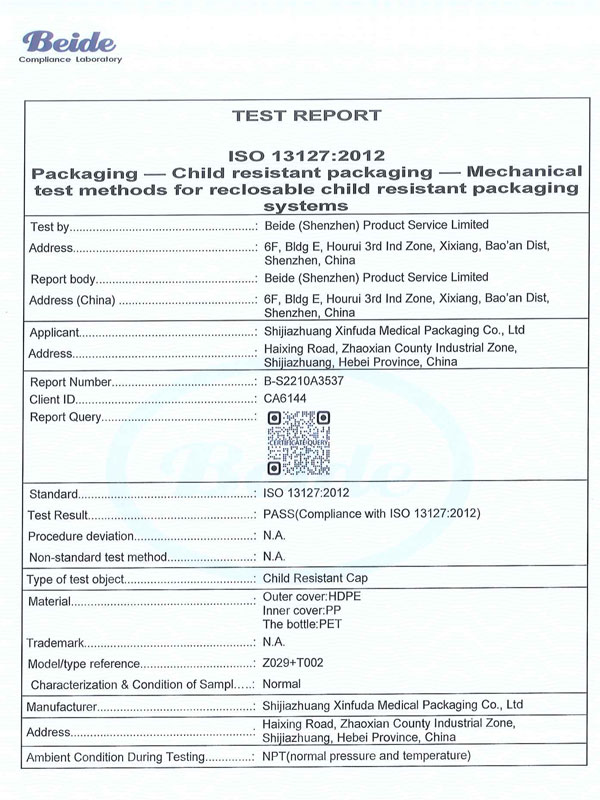
Our Product Range
We offer a variety of ISO 8317-compliant CRC caps, ensuring that we meet the diverse needs of our customers across multiple industries. Our caps are designed for safety, reliability, and ease of use, and we provide the following sizes:
28mm CRC Cap
33mm CRC Cap
38mm CRC Cap
45mm CRC Cap
Each of these sizes adheres to the strict requirements set by ISO 8317, offering reliable child-resistant functionality and a secure seal for a wide range of products. Whether you’re packaging pharmaceuticals, nutraceuticals, or household products, our 28mm, 33mm, 38mm, and 45mm CRC caps ensure that your product remains safely sealed and compliant with international safety standards.
Conclusion
ISO 8317 plays a critical role in ensuring that Child-Resistant Closures (CRC) meet global safety standards. By incorporating 28mm, 33mm, 38mm, and 45mm CRC caps, we provide packaging solutions that ensure child safety while still being practical and easy for adults to use. Our ISO 8317-compliant caps offer peace of mind and protection, helping to reduce the risk of accidental poisoning and ensuring the secure containment of hazardous substances.
Ready to secure your products with trusted child-resistant solutions? Explore our range of ISO 8317-compliant CRC caps today.
